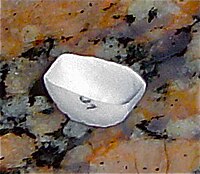Time release technology
It has been suggested that this article be merged with Slow release. (Discuss) Proposed since September 2015. |
It has been suggested that Controlled release be merged into this article. (Discuss) Proposed since January 2013. |
Time release technology (also known as sustained-release [SR], extended-release [ER, XR, XL], controlled-release [CR], and other synonyms) is a mechanism used in pill tablets or capsules to dissolve a drug over time in order to be released slower and steadier into the bloodstream while having the advantage of being taken at less frequent intervals than immediate-release (IR) formulations of the same drug. For example, extended-release morphine allows for people with chronic pain to only need one or two tablets per day.
List of abbreviations
There is no industry standard for these abbreviations, and confusion and misreading have sometimes caused prescribing errors.[1] Clear handwriting is necessary. For some drugs with multiple formulations, putting the meaning in parentheses is advisable.
| Abbreviation | Meaning | Notes |
|---|---|---|
| CD | controlled delivery | |
| CR | controlled release | |
| DR | delayed release | |
| ER | extended release | |
| IR | immediate release | |
| LA | long-acting | |
| MR | modified release | |
| SA | sustained action | Ambiguous, can sometimes mean short-acting |
| SR | sustained release | |
| TR | timed release | |
| XL | extended release | |
| XR | extended release | |
| XT | extended release |
A few other abbreviations are similar to these (in that they may serve as suffixes) but refer to dose rather than release rate. They include ES and XS (extra strength).
Methods
Today, most time-release drugs are formulated so that the active ingredient is embedded in a matrix of insoluble substance(s) (various: some acrylics, even chitin; these substances are often patented) such that the dissolving drug must find its way out through the holes in the matrix. Some drugs are enclosed in polymer-based tablets with a laser-drilled hole on one side and a porous membrane on the other side. Stomach acids push through the porous membrane, thereby pushing the drug out through the laser-drilled hole. In time, the entire drug dose releases into the system while the polymer container remains intact, to be excreted later through normal digestion.
In some SR formulations, the drug dissolves into the matrix, and the matrix physically swells to form a gel, allowing the drug to exit through the gel's outer surface.
Micro-encapsulation is also regarded as a more complete technology to produce complex dissolution profiles. Through coating an active pharmaceutical ingredient around an inert core, and layering it with insoluble substances to form a microsphere one can obtain more consistent and replicable dissolution rates in a convenient format that can be mixed and matched with other instant release pharmaceutical ingredients in to any two piece gelatin capsule.
There are certain considerations for the formation of sustained-release formulation:
- If the active compound has a long half-life (over 6 hours), it is sustained on its own.
- If the pharmacological activity of the active compound is not related to its blood levels, time releasing has no purpose except in some cases, such as bupropion, to reduce possible side effects.
- If the absorption of the active compound involves an active transport, the development of a time-release product may be problematic.
- Finally, if the active compound has a short half-life, it would require a large amount to maintain a prolonged effective dose. In this case, a broad therapeutic window is necessary to avoid toxicity; otherwise, the risk is unwarranted and another mode of administration would be recommended.
Pill splitting

Some time release formulations do not work properly if split, such as controlled-release tablet coatings, while other formulations such as micro-encapsulation still work if the microcapsules inside are swallowed whole.[2][3]
Among the health information technology (HIT) that pharmacists use are medication safety tools to help manage this problem. For example, the ISMP "do not crush" list[4] can be entered into the system so that warning stickers can be printed at the point of dispensing, to be stuck on the pill bottle.
Pharmaceutical companies that do not supply a range of half-dose and quarter-dose versions of time-release tablets can make it difficult for patients to be slowly tapered off their drugs.
References
- ^ Pennsylvania Patient Safety Authority (December 2004), "Drug name suffix confusion is a common source of errors", PA PSRS Patient Saf Advis, 1 (4): 17–18.
- ^ http://www.netdoctor.co.uk/medicines/100004842.html
- ^ Vranić, E; Uzunović, A (August 2009). "Influence of splitting on dissolution properties of metoprolol tablets". Bosnian journal of basic medical sciences / Udruzenje basicnih mediciniskih znanosti = Association of Basic Medical Sciences. 9 (3): 245–9. PMID 19754482.
- ^ Institute for Safe Medication Practices (ISMP), ISMP "do not crush" list: Oral dosage forms that should not be crushed (PDF)






